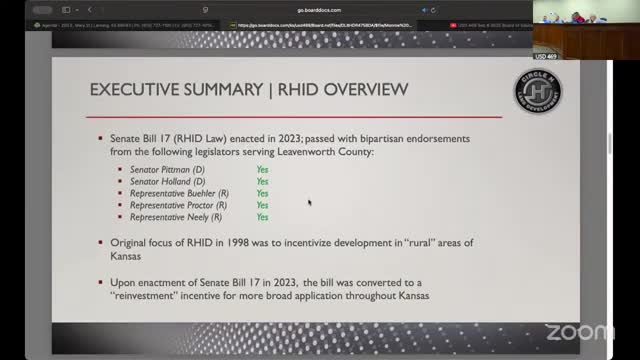Lansing Housing Study Reveals Need for 560 New Homes with Focus on Affordability
September 09, 2025 | Lansing, School Boards, Kansas
This article was created by AI summarizing key points discussed. AI makes mistakes, so for full details and context, please refer to the video of the full meeting. Please report any errors so we can fix them. Report an error »

Lansing's Board of Education meeting on September 8, 2025, highlighted a significant housing development initiative aimed at addressing the city's pressing housing shortage. The proposal, based on a recent housing study, outlines the need for 560 new homes, with a focus on single-family residences that fit conventional and small lot designs. This aligns with the demographic needs of Lansing's population, which has been grappling with a lack of affordable housing options.
The development plan anticipates constructing 218 homes that meet these specifications over the next six years, with an expected annual output of approximately 40 homes. The projected price range for these homes is between $250,000 and $450,000, which is deemed necessary to meet market demands while remaining accessible to potential buyers.
A key aspect of the discussion was the financial structure of the project, which involves a $3 million request for a Rural Housing Incentive District (RHID) to support the overall $12 million development cost. The developer emphasized that the financial risk lies primarily with them, stating that if the project fails, it would incur a loss of $12 million, while the school district and local government would not bear any financial burden.
The anticipated benefits for the Lansing community are substantial. By the end of the six-year RHID period, the school district is projected to net $382,000, with potential revenue exceeding $8 million over 20 years. This revenue is expected to provide a significant boost to the local tax base, benefiting the school district and other local entities.
The meeting also addressed concerns about the timeline for the project, with the developer committing to a shorter repayment period compared to previous proposals that extended up to 20 years. This approach aims to expedite the benefits to the community, allowing for quicker tax revenue generation as homes are built and sold.
Overall, the discussions at the meeting underscored a proactive approach to tackling Lansing's housing challenges, with a focus on collaboration between the developer, the school district, and local government. The initiative is positioned as a vital step toward enhancing the community's housing landscape and supporting its growth in the coming years.
The development plan anticipates constructing 218 homes that meet these specifications over the next six years, with an expected annual output of approximately 40 homes. The projected price range for these homes is between $250,000 and $450,000, which is deemed necessary to meet market demands while remaining accessible to potential buyers.
A key aspect of the discussion was the financial structure of the project, which involves a $3 million request for a Rural Housing Incentive District (RHID) to support the overall $12 million development cost. The developer emphasized that the financial risk lies primarily with them, stating that if the project fails, it would incur a loss of $12 million, while the school district and local government would not bear any financial burden.
The anticipated benefits for the Lansing community are substantial. By the end of the six-year RHID period, the school district is projected to net $382,000, with potential revenue exceeding $8 million over 20 years. This revenue is expected to provide a significant boost to the local tax base, benefiting the school district and other local entities.
The meeting also addressed concerns about the timeline for the project, with the developer committing to a shorter repayment period compared to previous proposals that extended up to 20 years. This approach aims to expedite the benefits to the community, allowing for quicker tax revenue generation as homes are built and sold.
Overall, the discussions at the meeting underscored a proactive approach to tackling Lansing's housing challenges, with a focus on collaboration between the developer, the school district, and local government. The initiative is positioned as a vital step toward enhancing the community's housing landscape and supporting its growth in the coming years.
View full meeting
This article is based on a recent meeting—watch the full video and explore the complete transcript for deeper insights into the discussion.
View full meeting
